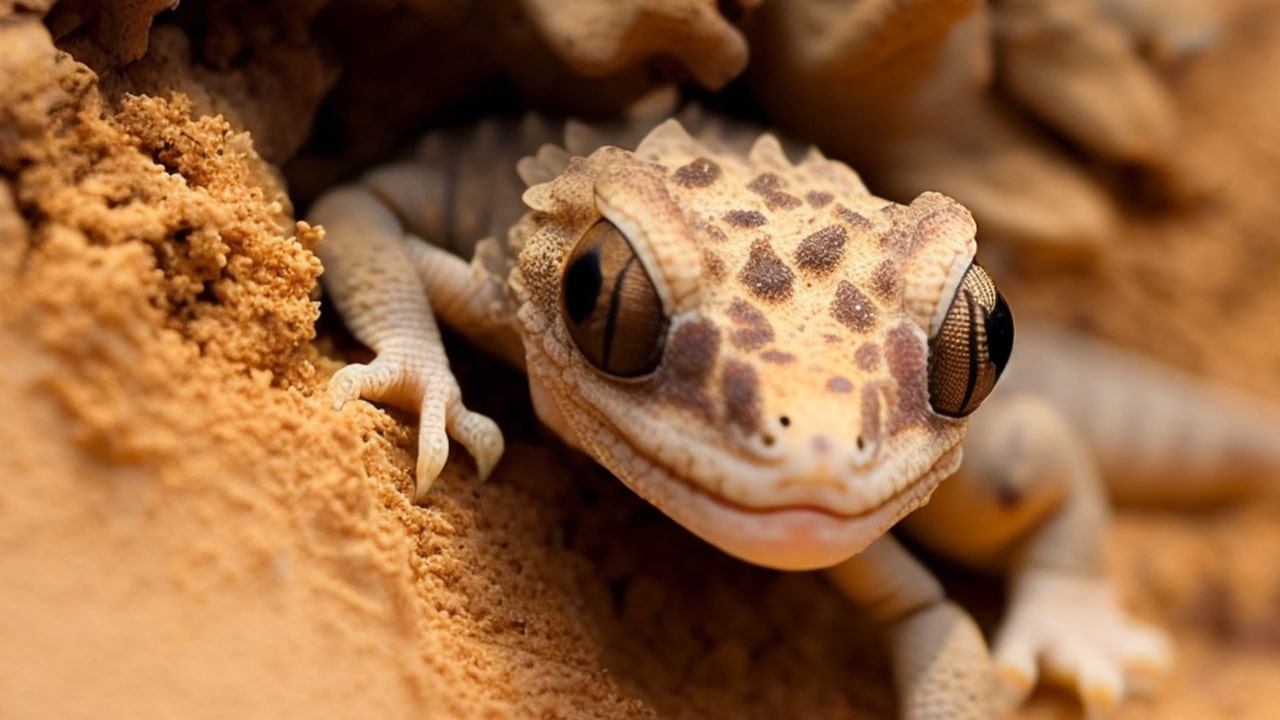If you are a Gargoyle Gecko owner, you might have noticed your pet digging in their enclosure. While this behavior is not unusual for these reptiles, it can be confusing for new owners. Understanding why your Gargoyle Gecko is digging is crucial to ensure their wellbeing and prevent any potential health issues. In this article, we will explore the reasons behind this behavior and what you can do to address it.
Contents
Introduction
Gargoyle Geckos are fascinating pets that are becoming increasingly popular among reptile enthusiasts. These geckos are known for their distinctive appearance and easy-to-care-for nature. However, it’s essential to be aware of their natural behaviors, including digging. Digging can be a sign of different things, including burrowing and hiding, searching for moisture, or laying eggs. Let’s dive into the reasons why your Gargoyle Gecko is digging.
Natural Habitat of Gargoyle Geckos
Gargoyle Geckos are native to New Caledonia, a group of islands in the Pacific Ocean. In their natural habitat, these geckos live in the tropical rainforest and spend most of their time in trees, using their prehensile tails to grip branches. Gargoyle Geckos are nocturnal, so they are active during the night and spend the day hiding in the trees’ foliage.
Why Do Gargoyle Geckos Dig?
Gargoyle Geckos dig for several reasons, including burrowing and hiding, searching for moisture, or laying eggs.

Burrowing and Hiding
In their natural habitat, Gargoyle Geckos use their strong claws to dig burrows in the ground or moss-covered branches. Burrowing provides them with a secure hiding spot and a place to rest during the day. If your gecko is digging, it could be a sign that they are looking for a cozy place to sleep and hide.
Searching for Moisture
Gargoyle Geckos need a humid environment to thrive. In the wild, they get most of their moisture from the rainforest’s humidity, dew, and morning mist. If the humidity levels in their enclosure are too low, your gecko might start digging to find moisture. This behavior is more common during the shedding process when geckos need extra moisture to help remove their skin.
Laying Eggs
If you have a female Gargoyle Gecko, digging behavior could be a sign that she is ready to lay eggs. Female geckos usually lay eggs in the spring and summer months, and they need a suitable place to lay their eggs. If you notice your gecko digging more than usual, it’s essential to check if they are a female and if they need a laying box.
Addressing Digging Behavior
It’s essential to address your Gargoyle Gecko’s digging behavior to ensure their health and wellbeing. Here are some ways you can address this behavior:
Provide a Digging Area
One way to address digging behavior is to provide your gecko with a digging area in their enclosure. You can use a container filled with a substrate that mimics their natural environment, such as coco coir, sphagnum moss, or a mixture of both. Place the digging area in a corner of the enclosure, away from the gecko’s food and water bowls.
Increase Humidity
If your gecko is digging to find moisture, you might need to increase the humidity levels in their enclosure. You can do this by misting the enclosure several times a day, adding a humidifier, or placing a shallow water bowl in the enclosure. Make sure to monitor the humidity levels with a hygrometer and adjust accordingly.
Check for Egg Laying
If your gecko is a female, digging behavior could be a sign that she is ready to lay eggs. You can check if your gecko is carrying eggs by gently feeling her abdomen. If you feel small, round, and firm objects, they might be eggs. In this case, you need to provide a laying box in the enclosure, which can be a container filled with damp substrate. Make sure to monitor your gecko’s health during the egg-laying process, as complications can occur.
Conclusion
Gargoyle Geckos are fascinating pets that exhibit natural behaviors such as digging. Understanding why your gecko is digging is crucial to ensure their wellbeing and prevent any potential health issues. If your gecko is digging, it could be a sign that they are looking for a place to burrow and hide, searching for moisture, or getting ready to lay eggs. Providing a digging area, increasing humidity levels, and checking for egg laying are ways to address this behavior. By doing so, you can help your Gargoyle Gecko thrive in their enclosure.
FAQs
- How often should I mist my Gargoyle Gecko’s enclosure?
- You should mist your gecko’s enclosure several times a day, especially during shedding periods.
- Can male Gargoyle Geckos lay eggs?
- No, only female Gargoyle Geckos can lay eggs.
- Can digging behavior indicate a health problem in my Gargoyle Gecko?
- It’s not common, but digging behavior can sometimes indicate a health problem, such as an infection or a lack of nutrients. If you notice other signs of illness, such as loss of appetite or lethargy, consult a veterinarian.
- How deep should the substrate be in a laying box?
- The substrate in a laying box should be at least four inches deep to provide enough space for the eggs.
- Can I use sand as a substrate in my Gargoyle Gecko’s enclosure?
- No, sand can cause impaction if ingested and should be avoided. Use a substrate that mimics the gecko’s natural environment, such as coco coir or sphagnum moss.


